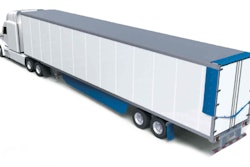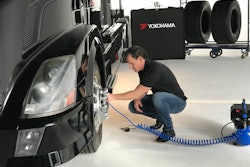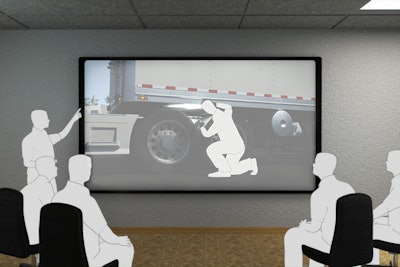 ITI’s Pro-TREAD training modules are designed to be customized for motor carriers and their drivers.
ITI’s Pro-TREAD training modules are designed to be customized for motor carriers and their drivers.Management at Epes Transport believed they were losing some recruits while drivers waited for the next orientation class to start.
Epes Transport, a truckload carrier based in Greensboro, N.C., started classes on Monday mornings. Drivers that received job offers came in on Sundays. With the weekly rotation, recruits were waiting several days and possibly more than a week at a time to start.
Some competitors gave drivers the option to start on any day of the week, says Mike Hammond, vice president of driver development and retention.
Epes Transport overhauled its orientation process in October 2017. Classes used to take Monday through Thursday to complete. Drivers can now come in any day of the week and be dispatched with their first load on the same day.
“It is a much better experience for drivers,” he says.
Fleet executives and managers are re-evaluating how to make orientation training more efficient. They also want to make the process more effective to increase driver retention and achieve better training results in safety, compliance, productivity and other critical areas.
Getting rid of paperwork and making the experience more engaging for drivers are the top priorities. The vehicles they are using to do this are online learning management systems (LMS) and new training content and media.
Prepared for arrival
With LMS technology, carriers are able to assign documents and training to new drivers to complete before arriving for orientation. Getting drivers started outside the classroom with training assignments is one way to get a higher degree of confidence that recruits will show up on day one, says Cindy Nelson, vice president of marketing and driver solutions for EBE Technologies.
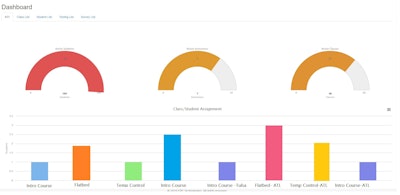 An activity dashboard in EBE’s learning management system shows the training status of new drivers.
An activity dashboard in EBE’s learning management system shows the training status of new drivers.EBE provides an LMS platform and other driver recruiting and onboarding applications through a platform it calls SHIPS. The LMS can pre-populate fields in documents that drivers fill out, such as names and addresses, and track drivers’ progress with their training assignments.
Aaron Purvis, chief technology officer of Instructional Technologies, Inc. (ITI), is seeing the same trend happen at carriers using its Sentix LMS platform who assign drivers courses to complete before they arrive.
“If a potential driver is willing to take steps on their own, before they show up, it is a good indication they are willing to follow through,” he says.
Fleets are being upfront with drivers they recruit to define their rules and expectations for orientation training to be completed outside the classroom, says Liz Everson, senior marketing manager for Cloud Solutions, J.J. Keller and Associates.
“We are seeing fleets migrate to a more flexible offering,” she says.
Epes Transport gives its driver recruits the option to complete orientation training outside the classroom. The company uses an LMS from Safety as a Service to assign custom training videos and electronic forms to drivers.
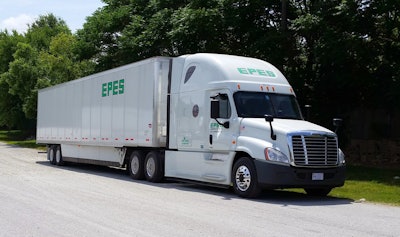 With online training, Epes Transport is able to get a new driver seated in a truck on the day the driver arrives to its office.
With online training, Epes Transport is able to get a new driver seated in a truck on the day the driver arrives to its office.In the fall of 2018, Epes started paying drivers $100 to complete its orientation online. Drivers receive another $125 when they come to the office to finish. With the online option, the number of “no shows” to orientation has dropped significantly.
In 2018, Epes Transport saw its qualified driver applicants increase 80 percent and its new driver hires improve by 30 percent, Hammond says. He credits the technology for the results by freeing recruiters to sell. Recruiters were previously encumbered by data processing and managing drivers through the orientation process.
How drivers learn
An additional benefit of moving to an online classroom is to be able to gather important feedback from drivers and improve training results.
Two years ago, the orientation process of Premium Transportation Logistics (PTL) involved a lot of paperwork and classroom training, says Jeff Curry, president of the Toledo, Ohio-based truckload carrier.
When Curry joined PTL two years ago, “I knew right away that (orientation) was too inefficient and cumbersome for drivers,” he says.
PTL began using an online driver training platform that Curry realized was not going to work. “I was not pleased with it at all,” he says.
The platform lacked a feedback mechanism for drivers and was devoid of analytical tools to help the company better understand and improve how drivers were learning.
Curry switched PTL over to DRIVE FIRST, an online learning management system from instructional design company Luma. The platform comes with a collection of “eNugget” learning modules on relevant safety, compliance and other driver orientation topics. It also has electronic forms that have reduced “a massive amount of paperwork,” Curry says.
 CLICK on the image to view a new industry white paper by Luma that demonstrates how to evaluate and improve driver training.
CLICK on the image to view a new industry white paper by Luma that demonstrates how to evaluate and improve driver training.Luma uses real-time analytics, feedback loops and ongoing surveys in DRIVE FIRST to evaluate and customize the content to achieve the desired training results of its clients.
PTL has a 125-truck fleet of owner operators. With DRIVE FIRST, the company assigns forms and eNugget modules for drivers to complete prior to arriving for orientation. PTL has compressed the orientation process by more than a full day that drivers spend in its office, Curry says.
With a more efficient and automated orientation process, PTL hired 288 drivers in 2018 without adding more office staff. The technology has also benefitted drivers since “time is money,” Curry says.
“(DRIVE FIRST) is a tremendous efficiency gain for us, and I hope a better experience for the drivers,” he says. “Everybody has won in this deal.”
A number of companies that provide LMS systems say they are gathering feedback from drivers and their fleet clients to continuously improve the learning experience.
With the Sentix platform, fleets can set up and schedule surveys to drivers to ask about their training experiences, Purvis says.
In addition to creating and administering surveys, Carriers Edge is developing a new feature that its clients can use to schedule and manage follow up calls and communications with drivers during the orientation and onboarding process, says Mark Murrell, president.
Efficient learning
Another way online training is helping fleets deliver a more personalized orientation experience is by assigning only the courses that apply to specific job types. A local driver would have a different training track than a long distance driver, for instance.
“The driver does not feel like their time is wasted, and the company is not wasting time by giving the same broad brush to everyone,” Purvis says.
Motor carriers that use the Sentix platform can tailor the collection of Pro-TREAD training modules to each driver, by job type, and upload their own training content and electronic forms, he says.
In some cases, training providers also utilize a variety of media types that give drivers the option to adapt the training to their learning preferences, such as having content read to them in their native language versus reading text.
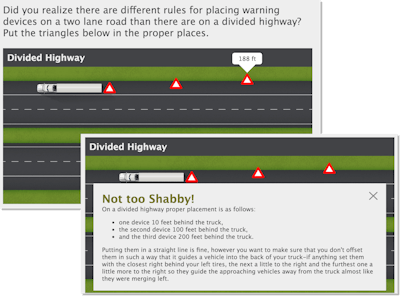 In this example of Luma’s interactive driver training modules, drivers drag and drop the warning markers to the proper placement behind the truck.
In this example of Luma’s interactive driver training modules, drivers drag and drop the warning markers to the proper placement behind the truck.In general, training is migrating away from videos that present content to learners at the same pace. Gina Anderson, an expert in learning science and chief executive of Luma, says current research shows attention spans when watching video are decreasing to 30 seconds or less.
“I am really not fond of videos, and there are a lot of videos in trucking,” says PTC’s Jeff Curry. “Videos get dated pretty quick.”
Additional research shows the average adult can hold 7 ± 2 pieces of information in their working memory, Anderson says. Even if a driver is attending orientation and motivated to learn, their brains “might put a halt on the learning because it is simply too full,” she explains.
Luma’s eNugget modules are designed to be completed quickly and maximize learning. The Company’s analytical data show drivers’ average max time to complete a module is 9.43 minutes. Drivers spend the time reading, listening and playing learning games. They rate the eNuggets with animations and game-like interactive features — where they click and drag-and-drop — the highest.
“Drivers really do like it,” Curry says about the eNugget training modules. He describes Luma’s approach to training as giving drivers “microbursts of information” with “a video game component.”
In general, the trend for driver training is to deliver it in a way that eases the burden on employees and contractors. The message should be “we are investing in you,” says Brian Kubiak, director of marketing for the online training product line of J.J. Keller and Associates.
“The content itself is changing as well,” he says, to be “something that is engaging that drivers actually want to take part in.”
Adaptive learning
Another strategy that is making driver training more effective is to customize orientation for drivers based on results from skill and knowledge assessments.
Before assigning drivers a training course, the CarriersEdge online learning platform has standardized tests that fleets can assign to drivers to see what specific areas they need additional training on, or perhaps no training at all, says Mark Murrell, president of CarriersEdge.
J.J. Keller’s Brian Kubiak refers to this practice as “adaptive learning.” A brand new driver in the industry will have different training requirements than a 20-year veteran. The veteran may test out of certain courses or given an accelerated training schedule that makes the content more relevant to the driver, he says.
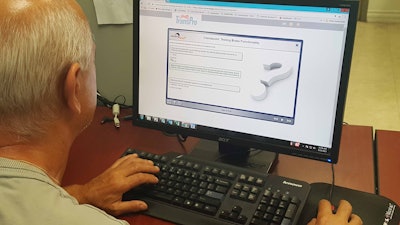 With a library of safety and compliance courses, CarriersEdge help fleets train their drivers with on-demand modules that drivers can access anywhere, anytime.
With a library of safety and compliance courses, CarriersEdge help fleets train their drivers with on-demand modules that drivers can access anywhere, anytime.Little Guys Delivery Service assigns CarriersEdge training courses to new drivers in orientation. At first, some drivers were hesitant to use computer-based training, says Ahmed Fadul, general manager of the Toronto-based company.
The carrier operates a fleet of 15 trucks and contracts with operators of 35 light vehicles to provide expedited less-than-truckload delivery service. Within six months of launching the new training program the drivers liked it, he recalls.
“It provided them with a lot of information they didn’t know,” Fadul says. “For some of the drivers it refreshed information they knew earlier but didn’t put into practice. It helped to shake the complacency and get them back to safely driving the truck.”
Fadul plans to make further use of CarriersEdge by having managers take the same training courses. By having everyone go through the same training, “it helps managers talk to the drivers. Everyone is on the same page and knows the proper methods and requirements for hauling our loads,” he says.
Ryder System is using ITI’s Sentix platform and Pro-TREAD modules as an option to comply to new employee safety orientation training requirements. Driving and other job types, such as technicians and warehouse personnel, must complete certain training modules before starting their jobs at any of their sites across North America.
“Every one of our operations varies so greatly,” says Brandon Folck, Ryder’s group director of safety, health and security. “There is a baseline orientation that must be done, but we have over 150 courses available to each of our operations to use.”
Folck says ITI continues to work with Ryder to tailor the training for drivers so they are able to complete it in a timely manner. “They work very well with us to change how one is trained and to streamline the online training content,” he says.
A growing number of companies that use online training say they are giving drivers more efficient and rewarding learning experiences. With the time and money they are saving in orientation training, fleets are focusing their resources on setting drivers up for success.




